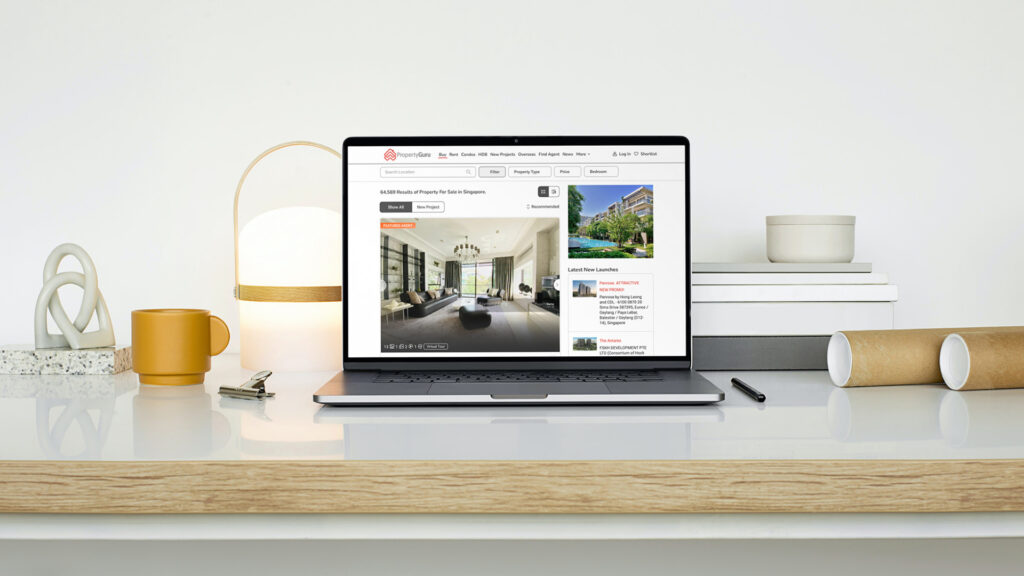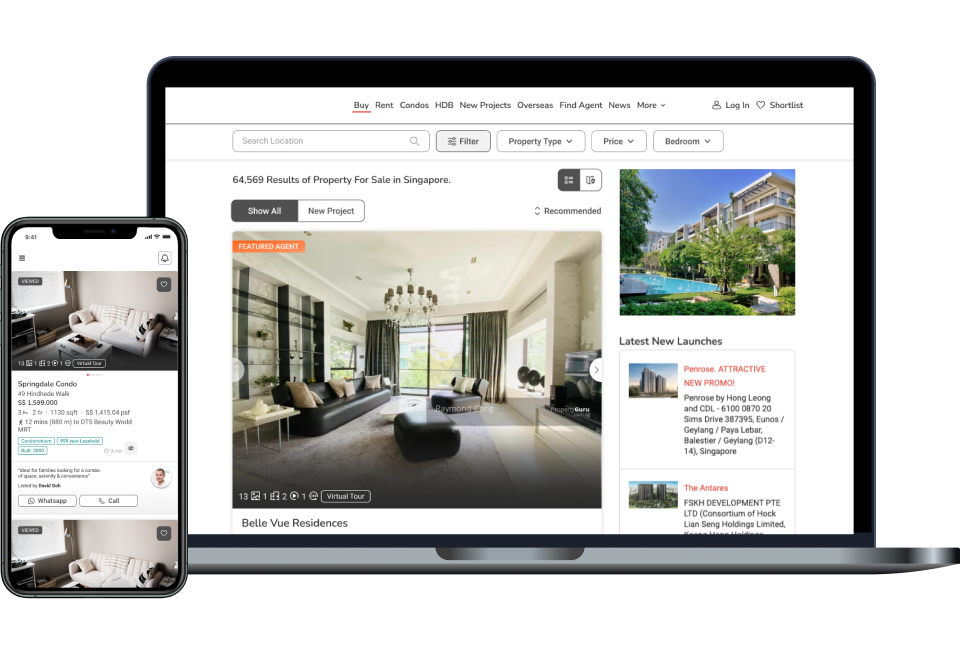Turbo charging property listings in search results, empowering property agents and drving business for South East Asia’s leading property portal.
Introduction
Boost Plus was a premium-priced ad product designed to maximise agent’s listing visibility. The product elevated listings into a new tier in search results. Also, listings would stand out with an upgraded appearance with new interactive elements to drive engagement.
In addition, agent’s listing management was enhanced with new tools and functionality, offering agents greater control and optimisation over their listings.
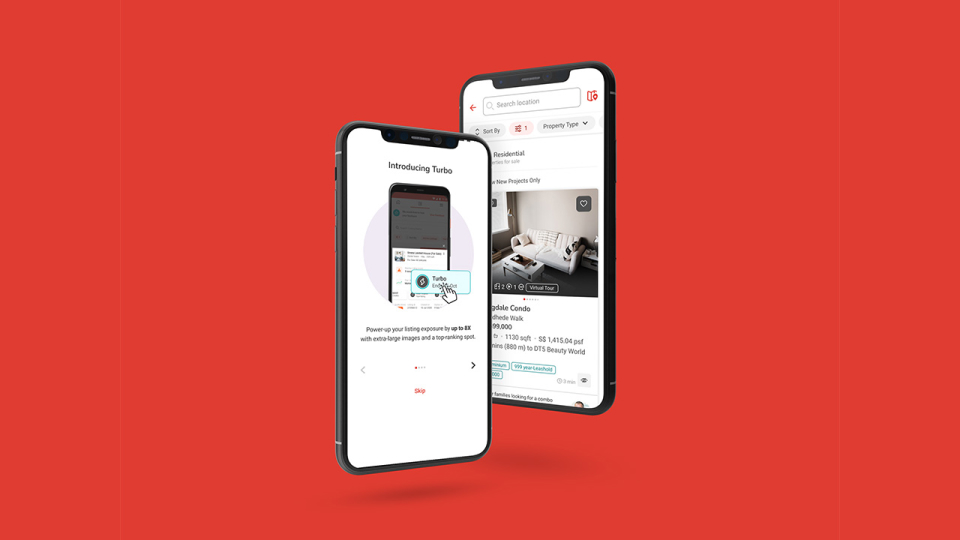
For this project, I led designs to implement UX journeys and new UI elements for both web and mobile app. I delivered finalised designs in two sprints (4 weeks) and shipped in August 2021.
Background and oppurtunity
Since 2019, the number of product purchases by agents had remained stagnant, effectively making leads cheaper for agents. As a result, agents were spending less to acquire the same number of leads, limiting total product purchases.
To capture more value from agents and drive higher purchases, my team proposed a new premium product positioned above other products in search results.
Value Proposition
The new premium product enables agents to increase listing visibility, attract more leads, and drive revenue growth. Key benefits include:
- Enhanced Placement: Listings appear in a higher-tier position in search results, ensuring greater exposure.
- Increased Engagement: Upgraded listing visuals and interactive features to attract more consumer attention.
- Optimisal Lead Generation: More visibility translates to higher inquiry rates, improving conversion opportunities.
- Revenue Growth Potential: Higher engagement and lead generation to faster property transactions and increased earnings.
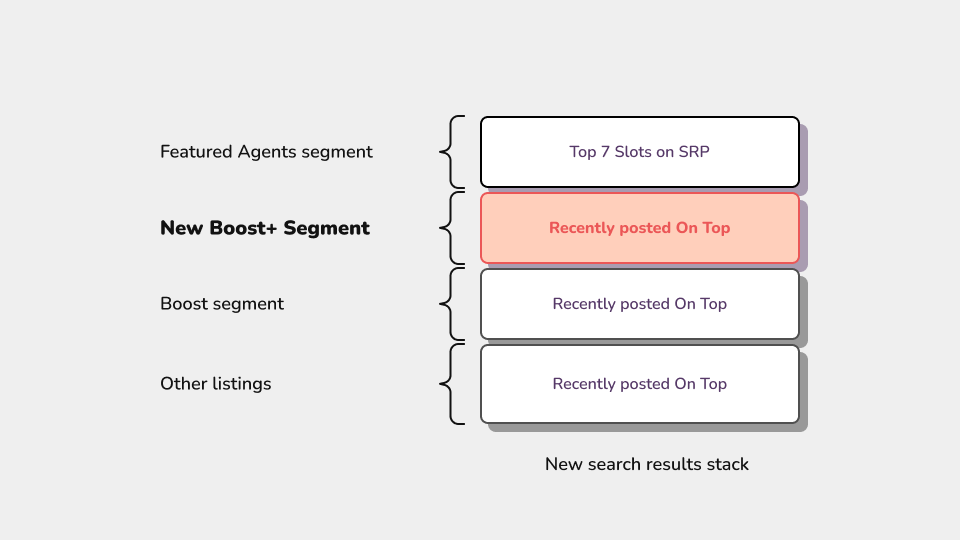
New listing visual and interactions
Partnering with the Consumer UX Design team, a new dynamic listing experience was created, shaped by user research. Below is a comparison with the new proposed design with current listing styles.
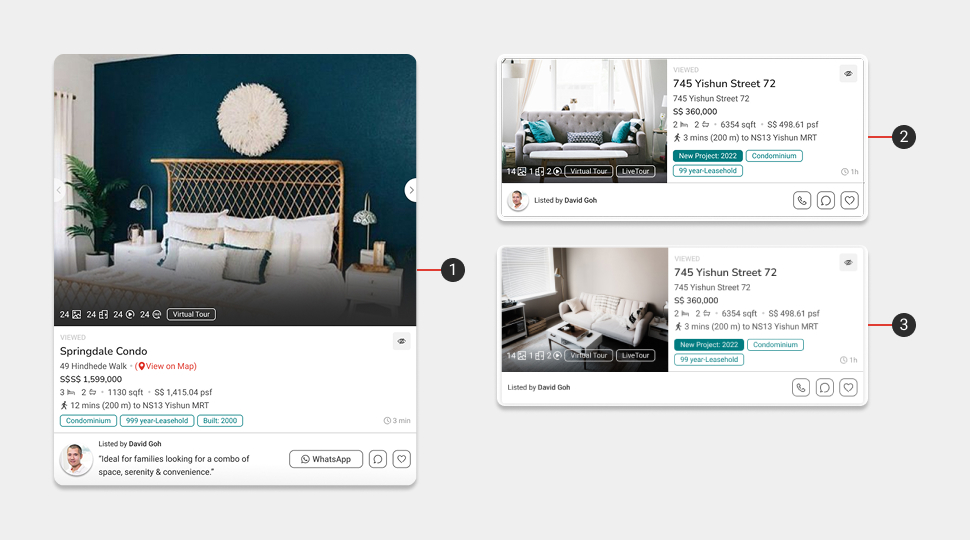
Designed to benefit both agents and consumers, the update introduced new features to increaase engagement.
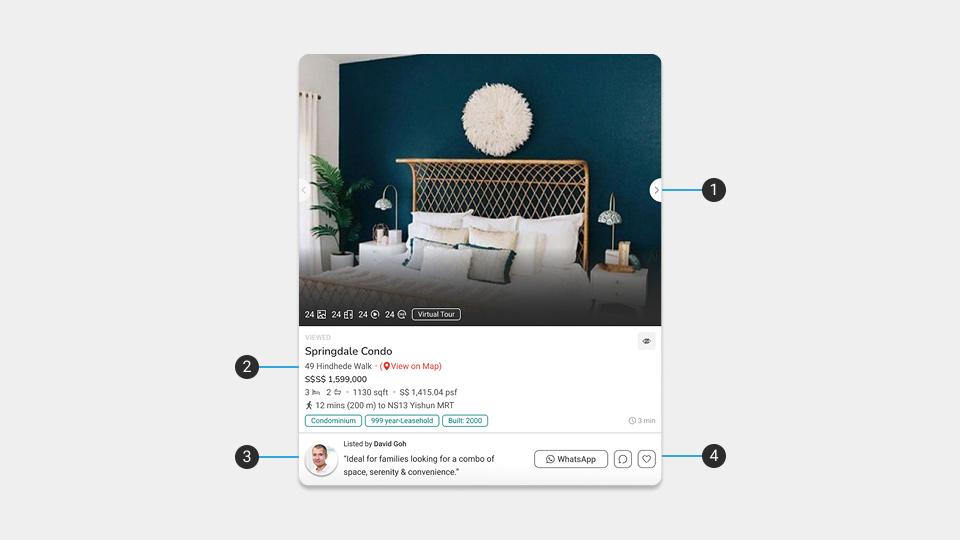
New features included:
- New Carousel Banner: Turbo Listings will feature a large navigable multi-image viewer. This replaces single image thumbnails.
- New map feature: Consumers can launch a google maps screen from the listing.
- Agent profile: New Profile Banner in the card footer. Consumer research shows this adds trustworthiness and increases confidence to contact agents directly.
- Whatsapp Integration: Consumers can directly message agents via Whatsapp. All listings will still retain the chat feature, sending messages to the agent’s inbox.
The new listing design tested overwhelmingly positive from both agents and consumers, validating its impact and usability. Next, I will go through the activation phase and user-flow for product purchase. Next, I began working on the product activation flows from within agent’s listing management screen.
Rapid Protoyping
To ensure quick and effective testing, I rapidly prototyped the activation flow for Boost Plus, focusing on high production fidelity to gather the most accurate feedback from agents. Rather than using low-fidelity wireframes, I built an interactive prototype that closely mirrored the final product—complete with realistic UI elements, animations, and near-final copy.

This approach allowed agents to experience Boost Plus as if in a live environment. This reduced gaps in comprehension and ensured more actionable insights. By streamlining interactions and refining edge cases, I was able to validate usability, identify friction points, and iterate efficiently before development, ultimately leading to a more seamless final implementation.
Getting early feedback was crucial to ensuring the needs of high-value agents were met. We managed to recruit nine agents from two prolific agencies to take part in our UX research panels. The first half was a focused user interview, agents shared their honest thoughts on the platform’s current state, highlighting pain points and opportunities for improvement.
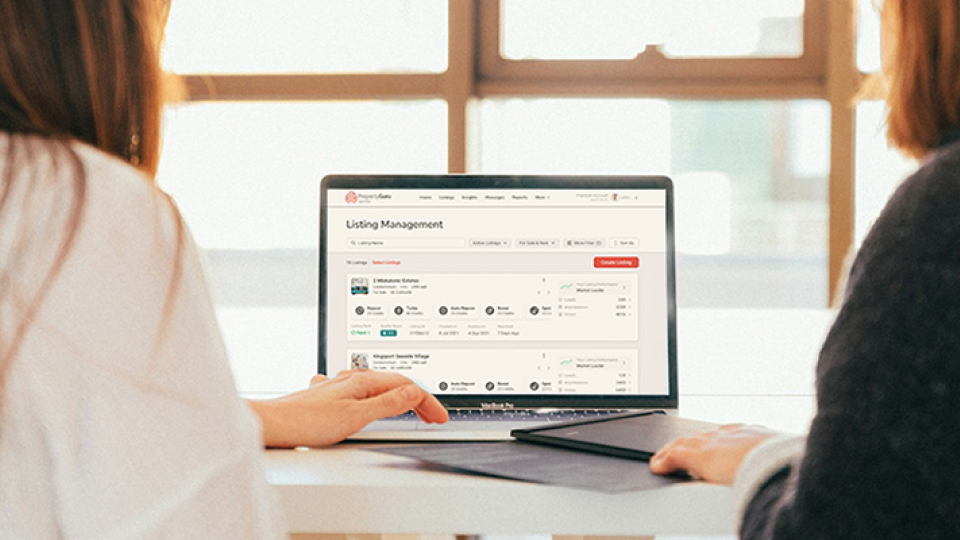
The next half, agents engaged in usability testing, interacting with the Boost Plus prototype while thinking out loud. This provided real-time insights into their experience, expectations, and potential concerns. These session were extremely beneficial and provided the following takeaways.
Key insights
Enthusiasm for New Search Result Page Features – Agents responded positively to the enhanced listing design and new interactions, appreciating improved visibility and engagement opportunities. These updates were seen as valuable enhancements to their marketing efforts.
Pricing in Competitive Areas – While agents recognised the benefits of Boost Plus, those operating in highly competitive locations felt pricing was too steep, making it less viable for sustained use. They expressed concerns about affordability compared to their expected return on investment.
Uncertainty About Product Effectiveness – Agents were hesitant about the effectiveness of premium products overall. Many were unsure if higher-tier listings would directly translate to better lead generation, leading to reluctance in committing additional spending.
Negative Reactions to the Name – The product name did not resonate well with agents. Some found it unclear or not reflective of the product’s premium positioning, suggesting that a more strategic and sophisticated name might improve perception and adoption.
Frustration with Boost Plus Disabling Active Products – Agents strongly disliked activating Boost Plus automatically deactivated existing active products. This created frustration, as they felt forced to choose rather than being able to leverage multiple promotional tools simultaneously.
Delayed Adoption Until Current Products Expire – Due to conflicts with existing active products, agents were unwilling to purchase Boost Plus, until current products ran their course. This led to concerns about adoption rates and lost opportunities during the official launch.
Next steps
To improve adoption, we needed to address pricing concerns by exploring pro-rated or tiered pricing, ensuring affordability in competitive areas.
Implementing a new conflict resolution flow was critical to adoption. Where Boost Plus offsets the cost of active products rather than disabling them.
Rebranding the product to align with agent expectations. This will distance it from other products, conveying it’s own unique brand and functions
Finally, additional education and proof of performance through messaging and UI elemets to build trust in the effectiveness of premium products.
Rebrand from Boost Plus
Boost Plus was positioned as a superior alternative to the existing Boost. However, agents felt it as merely an “upsize” rather than an entirely new offering. This lack of distinction contributed to confusion, with some agents overlooking Boost Plus in listing management due to its initial iconography being similar to Boost.
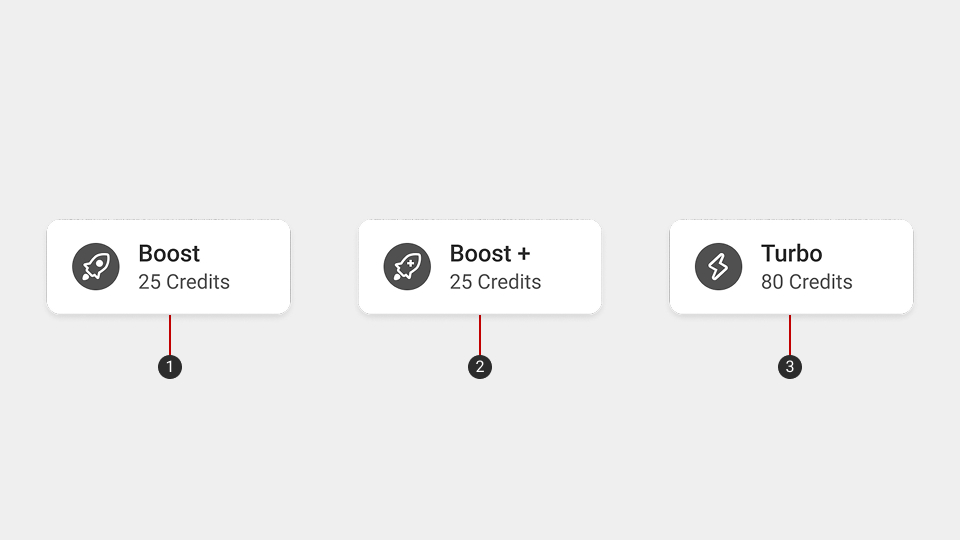
Recognising the need for a clearer identity, I initiated cross-team workshops with Branding, Marketing, and the UI Design teams. The focus was redefining the product with a new name and iconography. From these session the product was effectively rebranded as Turbo, invoking something elemental that instantly conveyed speed and impact.
Managing product conflicts
Designing Turbo’s user flow required accounting for listings with several configurations of multiple active products. To handle these scenarios, I created a decision matrix mapping how Turbo would interact with existing products.
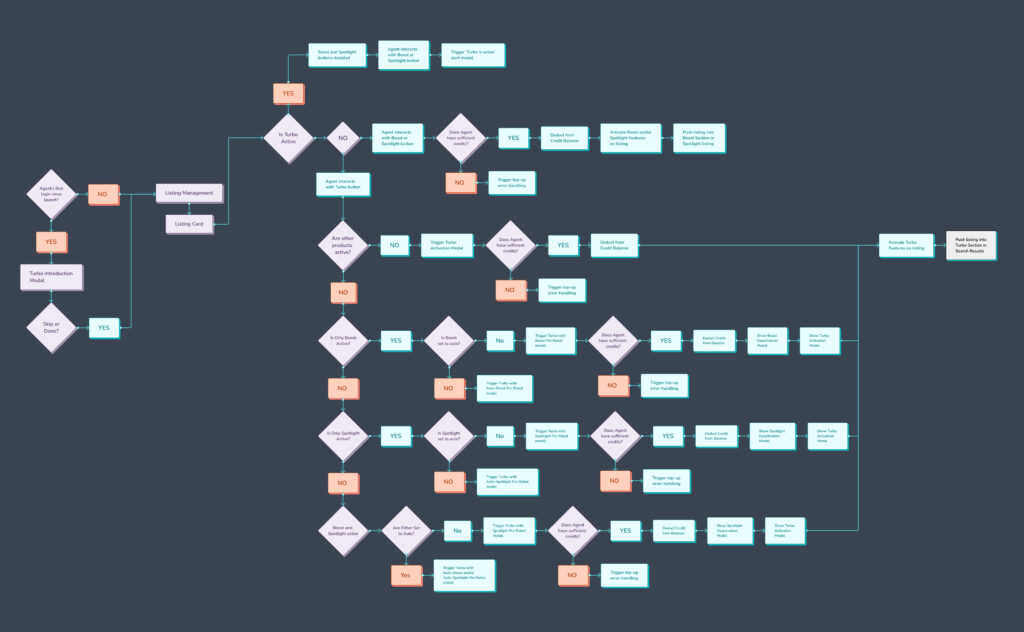
Helping agents decide
With the scenarios mapped out, I then created new activtion flows. Now modals and dialogs will warn the agents that turbo deactivates other active products. And in the event that agents try to activate other products when Turbo is active, new button states were introduced.
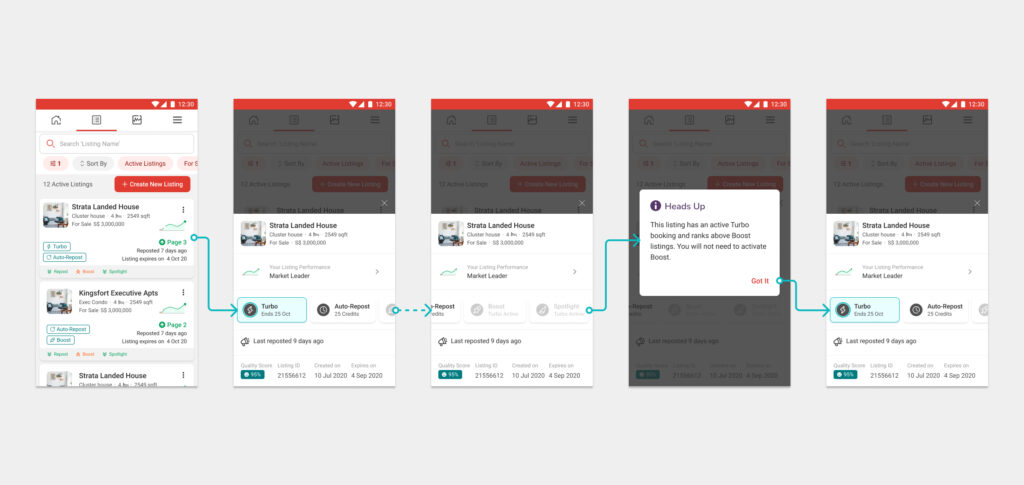
In the above example, other product buttons are in a new disabled state when Turbo is active. Interacting with these buttons now trigger a dialog that informs agents of Turbo’s superior benefits.
Pro-rating activation costs
In the sample below, a confirmation desktop modal appears when agents now purchase Turbo – when other products are active. Agents are now clearly informed that Turbo deactivates other existing active products.
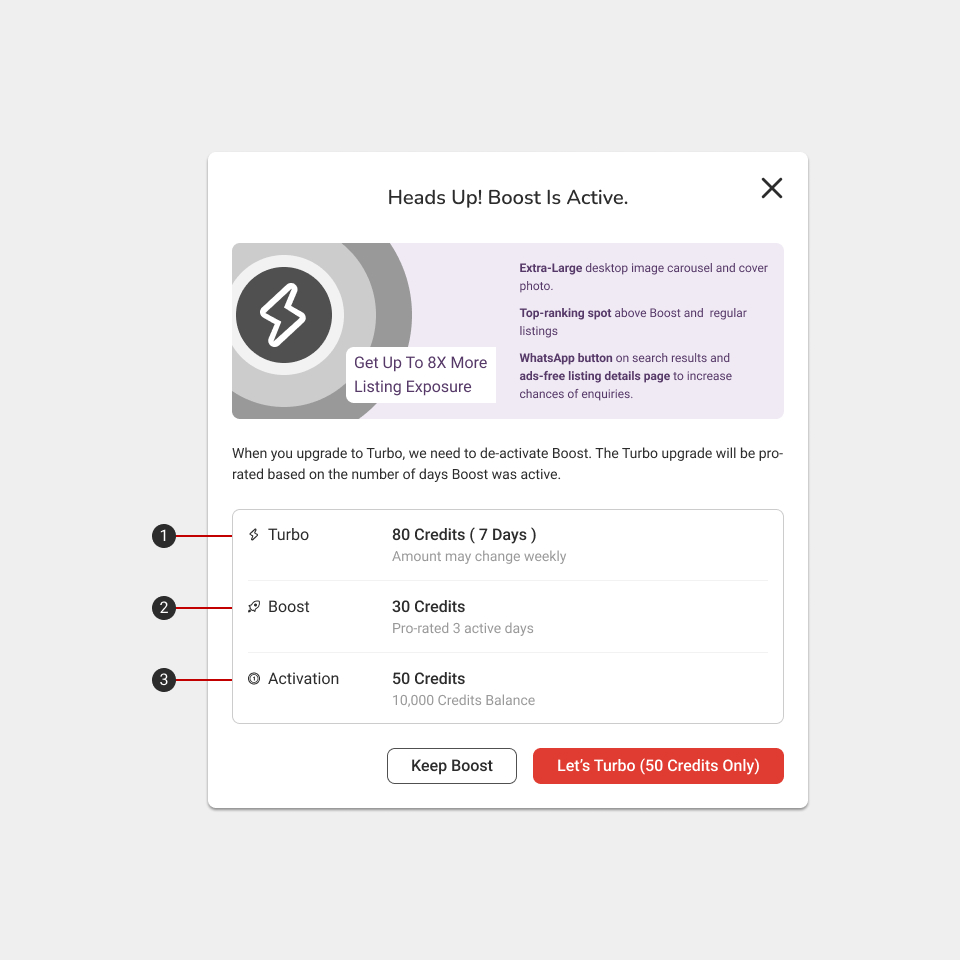
This will also indicated the pro-rated Turbo’s price based on any currently active products, allowing agents to receive a fair cost adjustment. If they choose to proceed, Turbo will offset the cost of their existing products based on remaining duration.
This ensured a seamless upgrade path without financial loss. The aim of the approach was to encourage adoption while still maintaining transparency and value for agents.
Prepping for launch
In the final stages before Turbo’s launch, I worked closely with the Marketing, Sales, and Support teams to ensure a smooth rollout. This involved preparing FAQs, training materials, and sales collateral to address agent concerns and position Turbo effectively.
Support teams were equipped with clear troubleshooting guides, ensuring they could confidently assist agents during onboarding.
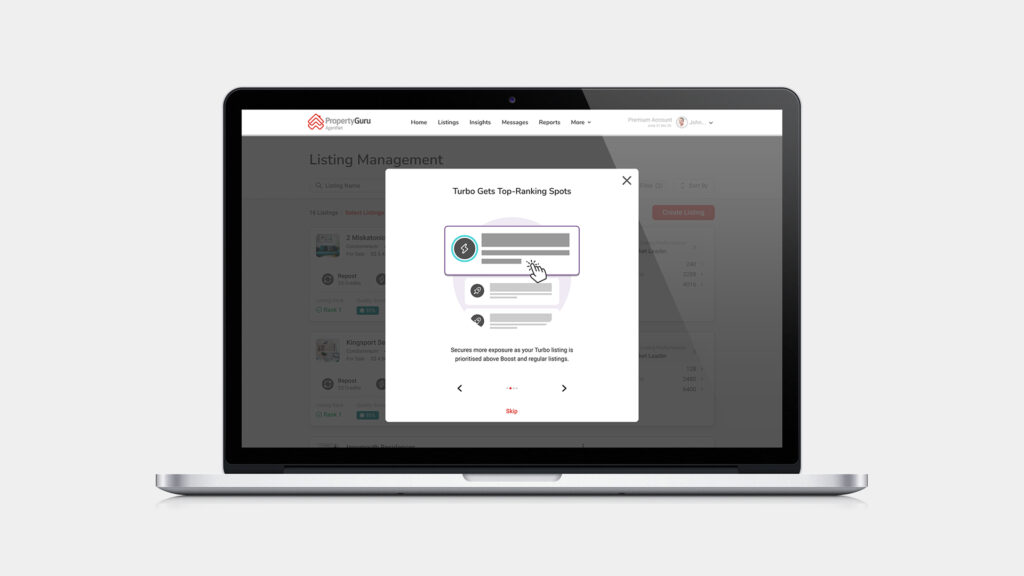
To enhance discoverability, I added supporting UI elements, including modal screens and tooltips to introduce Turbo within the platform. These elements highlighted Turbo’s benefits and guided agents through activation, reducing friction and improving adoption.
By aligning both internal teams and the user experience, we ensured a seamless launch that amplified awareness and engagement.
Outcomes
Turbo exceeded expectations, achieving a 50% adoption rate and attracting over 70,000 agents by Q1 2021. Monthly purchases quickly scaled to over 100,000 transactions per month, with the first month alone generating $1 million in revenue.
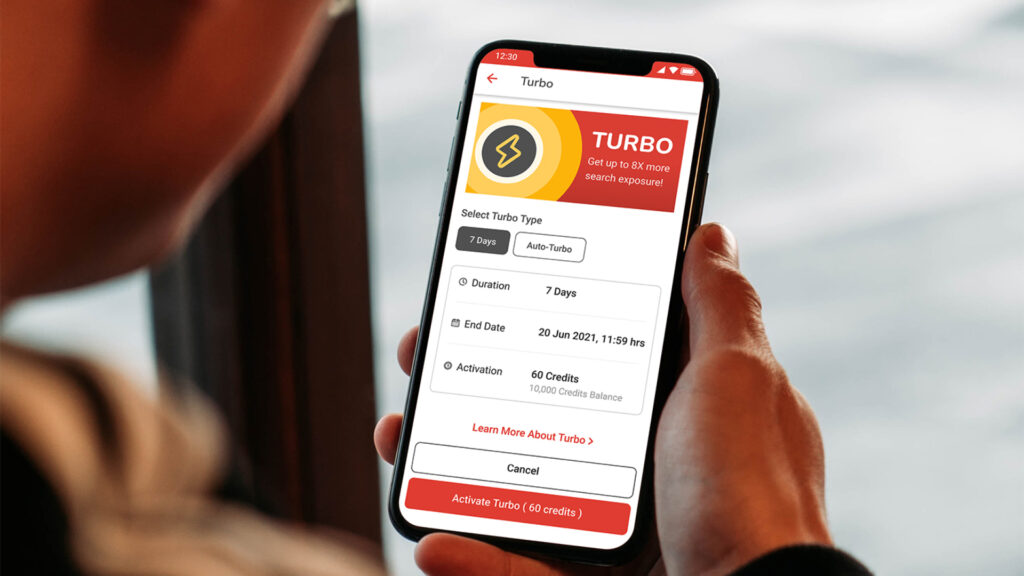
Since its launch, Turbo has consistently delivered annual profits ranging between $10–12 million, solidifying its position as a high-performing premium ad product.
However, as anticipated, Turbo’s success cannibalised Boost, shifting agent preference towards the higher-tier product. Additionally, Spotlight saw a significant decline in usage, leading to its eventual sunsetting, as agents migrated to Turbo for its superior visibility and engagement benefits.
Turbo’s performance not only validated the demand for a premium placement product but also reshaped the ad credit ecosystem, optimising revenue while streamlining the product lineup.
